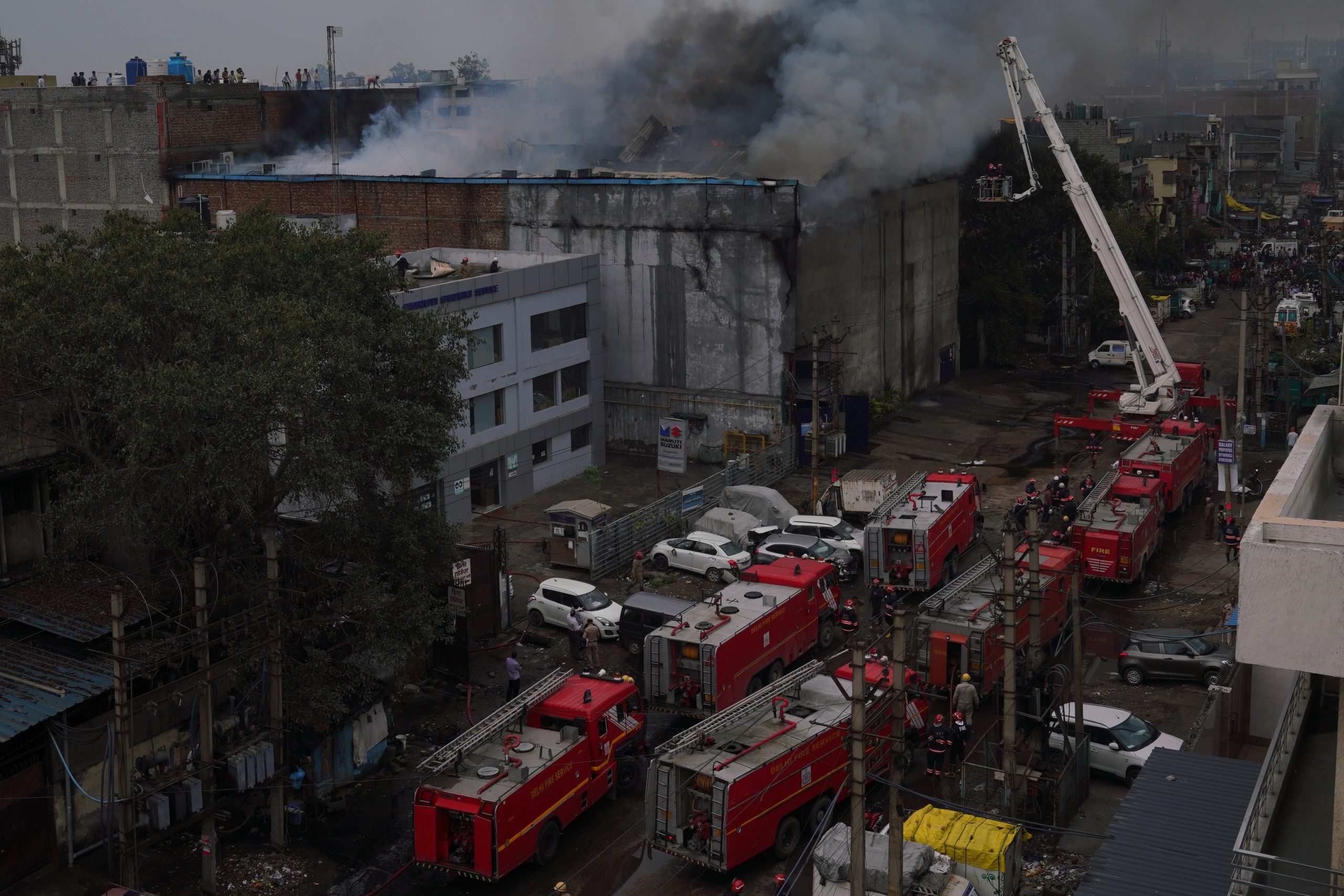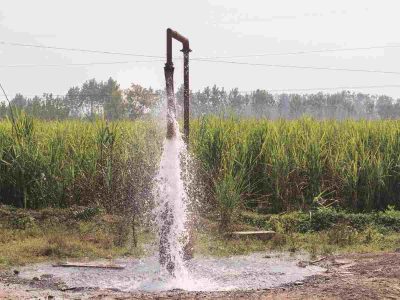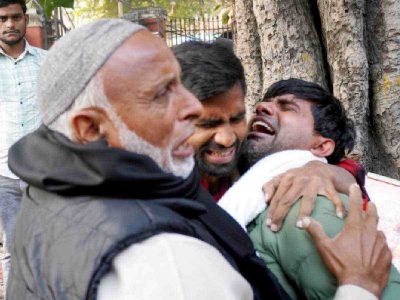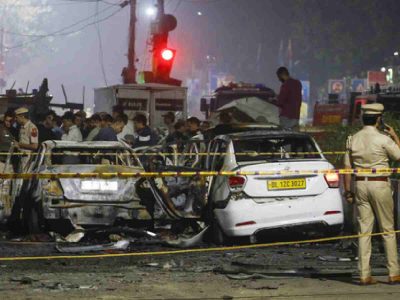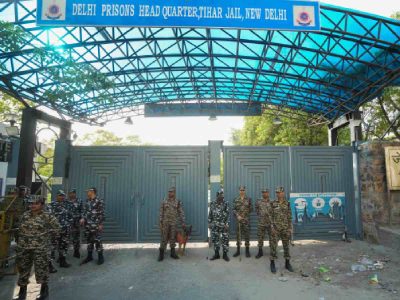As summers arrive in the national capital, so do the impending dangers of spontaneous fires. Unfortunately, these concerns have been overlooked by the many nursing homes and hospitals that exist across Delhi.
Despite the deadly tally of victims succumbing to widespread fire incidents across Delhi in 2024, the situation remains as awry as ever, according to statistics from the Delhi Fire Services (DFS). Only 209 institutional buildings — nursing homes and hospitals — have valid Fire Safety Certificates (FSCs) as of March 28.
Health Department data shows there are 1,196 nursing homes in total, which also includes multiple hospitals. The highest number of nursing homes lost their registration in 2023 — 566 in all — while in 2024, 92 more expired their registrations. At present, only six nursing homes have valid registrations, slated to expire in 2026. Meanwhile, 172 nursing homes saw their registrations lapse on March 31 this year.
RML and Safdarjung hospital at risk of burning to the ground
According to the DFS portal tracking FSC shortcomings, 257 such instances have been recorded at hospitals in Delhi since 2021. These lapses remain unresolved, with prominent institutions such as Ram Manohar Lohia Hospital and Safdarjung Hospital facing criticism for failing to comply with basic safety requirements.
Flagged on October 22, 2024, the Gynae and Ortho blocks at Safdarjung Hospital were denied renewal of their FSCs. On October 24, the Surgical Block was also flagged. These three blocks currently operate without a valid FSC. A letter sent to the Medical Superintendent at Safdarjung Hospital highlighted faults observed during an inspection that had not been rectified.
The inspection found multiple fire safety issues: blocked escape routes, non-functional first aid hose-reels, obstructed hydrants, damaged yard hydrants, removed or under-repair fire pumps, a defective fireman’s switch, missing lift signage, a locked exit, hazardous waste storage on the terrace, and loose wiring on the top floor.
On December 31, 2024, the FSC renewal for RML Hospital’s Old Emergency Block was also denied due to several violations. These included a non-functional Manual Operated Electric Fire Alarm (MOEFA), inadequate exit signage, exposed hanging wires requiring trenching, and the absence of a 10,000-litre overhead tank.
No further inspections have taken place at these blocks since, even as the threat of fire continues to loom.
Fires sweep across Delhi, deaths have become the new normal
On March 31, the Delhi Police reported that two children had lost their lives in a fire in West Delhi’s East Punjabi Bagh area. The blaze had spread on March 30, when a 14-year-old girl and a seven-year-old boy were rescued and sent to Acharya Bhikshu Hospital in Moti Nagar. They succumbed to their injuries the following day.
A fire also broke out late on March 30 at Makkar Multispeciality Hospital in Priyadarshini Vihar, Laxmi Nagar. The blaze, which started from a window air conditioner on the ground floor of the three-storey building with a basement, prompted a swift response. Four fire tenders arrived at the scene by 12:15 am on March 31 and brought the fire under control. Despite the damage, no casualties were reported.
With repeated violations of FSC norms and lapses in building registration, 2024 has seen severe consequences across Delhi.
In late May 2024, a major fire broke out at Baby Care New Born Hospital in Vivek Vihar, East Delhi, on the night of May 25. The blaze, likely triggered by an oxygen cylinder explosion, began around 11:30 PM and quickly spread to adjacent buildings.
Despite DFS deploying 16 fire tenders, seven newborn babies died in the incident. Twelve were rescued from the facility, but six were declared dead upon arrival at another hospital, while one had died before the fire.
Five surviving infants were treated elsewhere, with some sustaining minor burn injuries.
The investigation revealed major safety violations: the hospital operated with an expired licence (valid till March 31, 2024), had no fire No Objection Certificate (NOC) or FSC, no emergency exits, non-functional fire extinguishers, no fire alarms or sprinkler systems, and was overcrowded with over 10 beds against an authorised limit of five. Some staff, including a doctor on duty, held only BAMS qualifications — inadequate for neonatal care.
Police filed charges against hospital owner Dr Naveen Khichi, who absconded, and arrested another doctor, Dr Akash.
Such violations are not limited to lesser-known facilities. According to the Health Department, Sir Ganga Ram Kolmet Hospital is registered for 36 beds, but its website lists 39 beds. Though the discrepancy is small, such lapses can prove fatal in emergency situations.
How Delhi fared in 2024
Atul Garg, Director of Delhi Fire Services, recently highlighted seasonal causes of fires in the city. “The risk of fires escalates during the summer due to short circuits triggered by overheating electrical wires and appliances. The high temperatures strain electrical systems, causing wires to overheat and become more susceptible to sparking or producing electrical arcs.”
Also Read: Delhi Hospital Fire: Accused got license despite similar pending case
“These sparks can easily ignite nearby flammable materials, leading to fire.”
Reflecting on the rising temperatures, Garg added, “In 2023, the DFS was receiving 160 calls per day. However, in view of the soaring temperature in the city this year, the number of calls per day increased to 200, in 2024.”
Fire incidents remain a pressing concern, though DFS reports a decline in 2025 compared to previous years. From January 1 to March 12, 2025, the city recorded 738 residential fire-related calls — a sharp drop from 5,552 in the same period of 2024. That number marked an 18.9% rise from 4,499 calls in 2023 and a 7.1% increase from 4,176 in 2022.
A senior DFS officer noted a marginal reduction this year: 938 calls in January (six deaths), 1,076 in February (two deaths), and 455 by March 11 (four deaths). Fire-related fatalities fell by 67.5%, with 12 deaths recorded by March 11, compared to 37 in the same period of 2024. Still, dangers persist.
On March 11, a fire in a makeshift tent near AGCR Enclave, Anand Vihar, killed three labourers attempting to save machinery.
In comparison, 2024 saw 1,204 calls and 15 deaths in January, 992 calls and 16 deaths in February, and six deaths by March 11. The year ended with 116 fire-related fatalities, peaking at 29 in June.
According to Garg, the unrelenting heat puts massive pressure on electrical systems. “The high temperatures caused wires and appliances to overheat and fail. With air conditioners running nonstop, power generators were pushed beyond capacity, triggering frequent short circuits,” he explained.
Unlike households, institutional buildings remain chronically vulnerable — not only due to seasonal heat, but because of systemic failures by government and municipal bodies. The death toll climbs each time a hospital burns down.
The Vivek Vihar nursing home tragedy, which briefly shocked the city, has already faded into a footnote in Delhi’s long history of avoidable fires.

